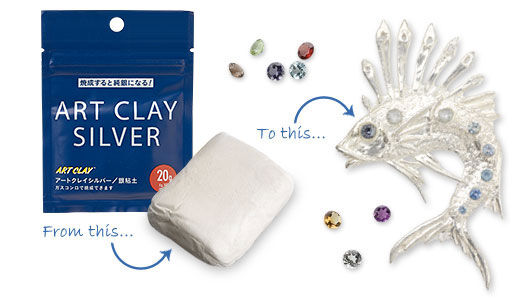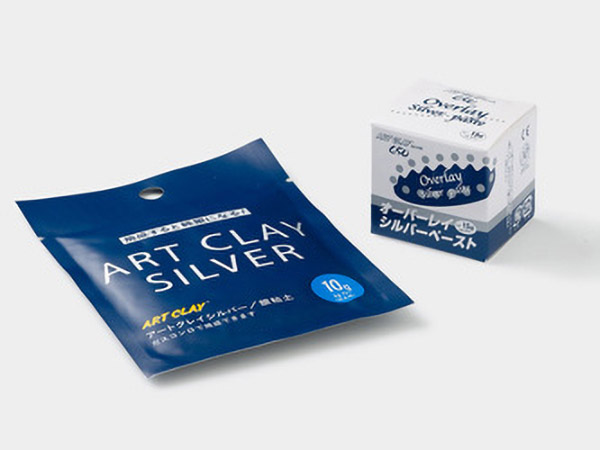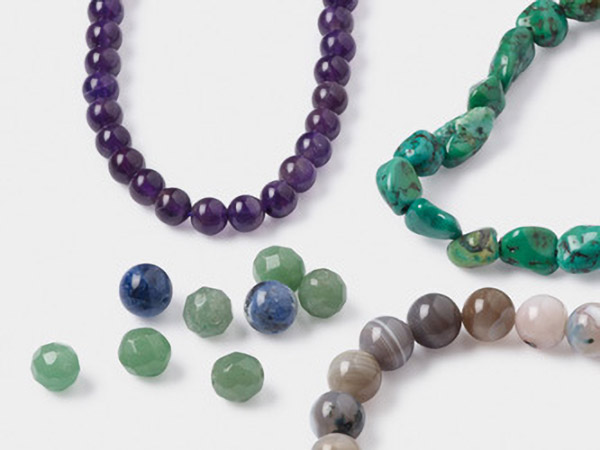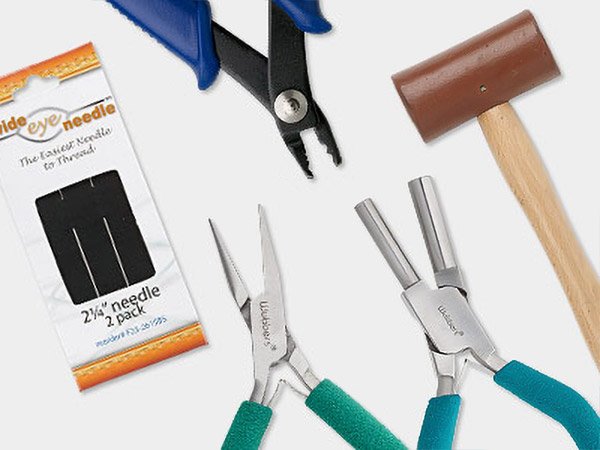Firing Gemstones into Art Clay®
Adding gemstones to metal clay can increase the appeal of a piece, but it's important to know how the stones will react. This article discusses how to fire different stone types.
Laboratory Grown Gems
Man-made gems can be fired and will not change color, crack or melt. These are laboratory created stones with a Mohs hardness of 7.5 and higher. They are the same chemical composition as the natural stones. They are perfect, without inclusions, and formed under tremendous heat. This speeds up the process that, in nature, takes thousands of years. Because they do not have inclusions, the heat of the firing will not fracture the stones. At the same time, you must be careful not to cause thermal shock by reducing the temperature of the piece too rapidly after firing. This can result in damaged stones.
Synthetic
''Synthetic'' is a term that can mean any type of man-made gemstone. This could be a duplicate of the chemical and physical properties of the natural stone or an imitation of the natural stone through the use of other materials, such as glass or even plastic. Therefore, you need to ask for ''laboratory grown stones.''
Be careful of doublets. They may be laboratory grown, but have two layers. The bottom layer is usually colored while the top layer is clear. The top, clear layer may melt when fired. This, however, can be an interesting technique if you know it is going to happen. Examples of doublets are emerald and peridot.
Cubic Zirconium (CZs)
CZs are beautiful in the clear form and look like diamonds. Most of the colored CZs fire well. We have encountered a few CZs that have changed colors. For example, a red CZ may turn brown. You will need to experiment. If you need a particular color to be reliable, it is better to use laboratory grown gems.
Natural Stones
You can fire some natural stones but, only when they are at least a 7 on the Mohs scale. This would include stones such as granite, quartz, and the corundum family. Bone, fossils, turquoise, etc. are low on the Mohs scale and will fracture or even powder in the kiln at 1472 degrees Fahrenheit.
If you really want to try a stone to see if it will work, test your stone at 1472 degrees Fahrenheit for 30 minutes in the kiln before adding silver or gold. If the stone is too soft or too precious to test, then plan on a setting where you can place the stone after the firing. You can set fine silver bezel wire into the Art Clay and fire it in place. Art Clay also has pure silver settings for certain sizes of faceted stones. After firing, place the natural stones using traditional jeweler's techniques.
Shop for Your Materials Here:
Have a question regarding this project? Email Customer Service.
Copyright Permissions
All works of authorship (articles, videos, tutorials and other creative works) are from the Fire Mountain Gems and Beads® Collection, and permission to copy is granted for non-commercial educational purposes only. All other reproduction requires written permission. For more information, please email copyrightpermission@firemtn.com.



